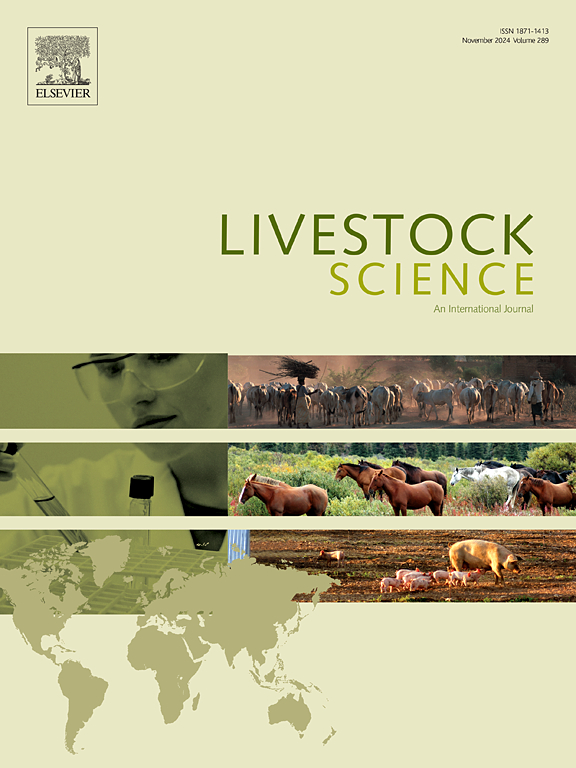Investigating cattle responses to acoustic signals to extend the functions of virtual fencing collars
IF 1.9
3区 农林科学
Q2 AGRICULTURE, DAIRY & ANIMAL SCIENCE
引用次数: 0
Abstract
Virtual fencing uses collars that emit acoustic signals and, if necessary, electric pulses to indicate the fence line. In Europe, legalization is lacking because of animal welfare concerns over electric pulses. This study investigated whether acoustic signals can replace electric pulses and influence grazing livestock movement. Two experiments with eight to ten Fleckvieh heifers and a prototype virtual fencing collar that emits directional acoustic signals and vibrations were conducted over 36 days in 2023 and 32 days in 2024. In the first experiment, the heifers’ responses to different acoustic signals and vibrations were analyzed. Generalized linear mixed effect models with data from behavioral observations and heart rate measurements revealed that the heifers were unimpressed by the signals, as often no response was observed and the changes in heart rate appeared to be unrelated to the signaling. Furthermore, clear signs of quick habituation were found, suggesting the need to test different signals. In the second experiment, we tested whether the heifers could be taught to adjust their walking direction to directional acoustic signals while moving toward a feed source. The training protocol used proved ineffective in teaching heifers to associate an acoustic signal with a walking direction, as generalized linear mixed effect models revealed that the heifers approached the indicated feed source in less than 50 % of the cases. Instead, side preferences were detected for some heifers. A different training protocol is recommended for further studies to test whether directional acoustic signals can influence the movement of cattle.
研究牛对声信号的反应,扩展虚拟围栏项圈的功能
虚拟围栏使用能发出声音信号的项圈,如果有必要,还会发出电脉冲来指示围栏线。在欧洲,由于对电脉冲的动物福利担忧,电脉冲还没有合法化。本文研究了声信号是否可以代替电脉冲影响放牧牲畜的运动。在2023年和2024年分别进行了36天和32天的两次实验,实验对象是8到10头Fleckvieh小母牛和一个发射定向声波信号和振动的虚拟围栏原型项圈。在第一个实验中,分析了小母牛对不同声音信号和振动的反应。基于行为观察和心率测量数据的广义线性混合效应模型显示,小母牛对信号不感兴趣,因为通常没有观察到任何反应,心率的变化似乎与信号无关。此外,还发现了快速适应的明显迹象,这表明有必要测试不同的信号。在第二个实验中,我们测试了是否可以教会小母牛在向饲料源移动时根据定向声信号调整其行走方向。所使用的训练方案在教授小母牛将声音信号与行走方向联系起来方面被证明是无效的,因为广义线性混合效应模型显示,在不到50%的情况下,小母牛接近指定的饲料源。相反,检测到一些小母牛的侧边偏好。建议采用不同的训练方案进行进一步研究,以测试定向声信号是否会影响牛的运动。
本文章由计算机程序翻译,如有差异,请以英文原文为准。
求助全文
约1分钟内获得全文
求助全文
来源期刊

Livestock Science
农林科学-奶制品与动物科学
CiteScore
4.30
自引率
5.60%
发文量
237
审稿时长
3 months
期刊介绍:
Livestock Science promotes the sound development of the livestock sector by publishing original, peer-reviewed research and review articles covering all aspects of this broad field. The journal welcomes submissions on the avant-garde areas of animal genetics, breeding, growth, reproduction, nutrition, physiology, and behaviour in addition to genetic resources, welfare, ethics, health, management and production systems. The high-quality content of this journal reflects the truly international nature of this broad area of research.
 求助内容:
求助内容: 应助结果提醒方式:
应助结果提醒方式:


